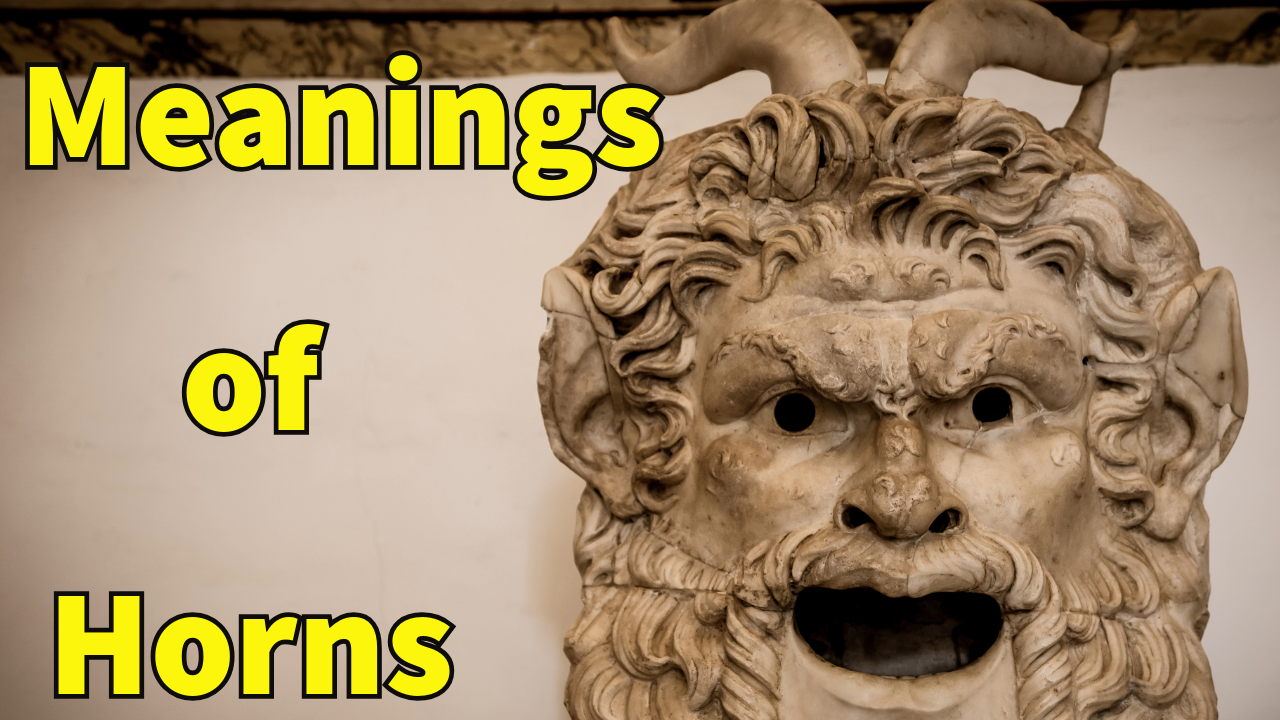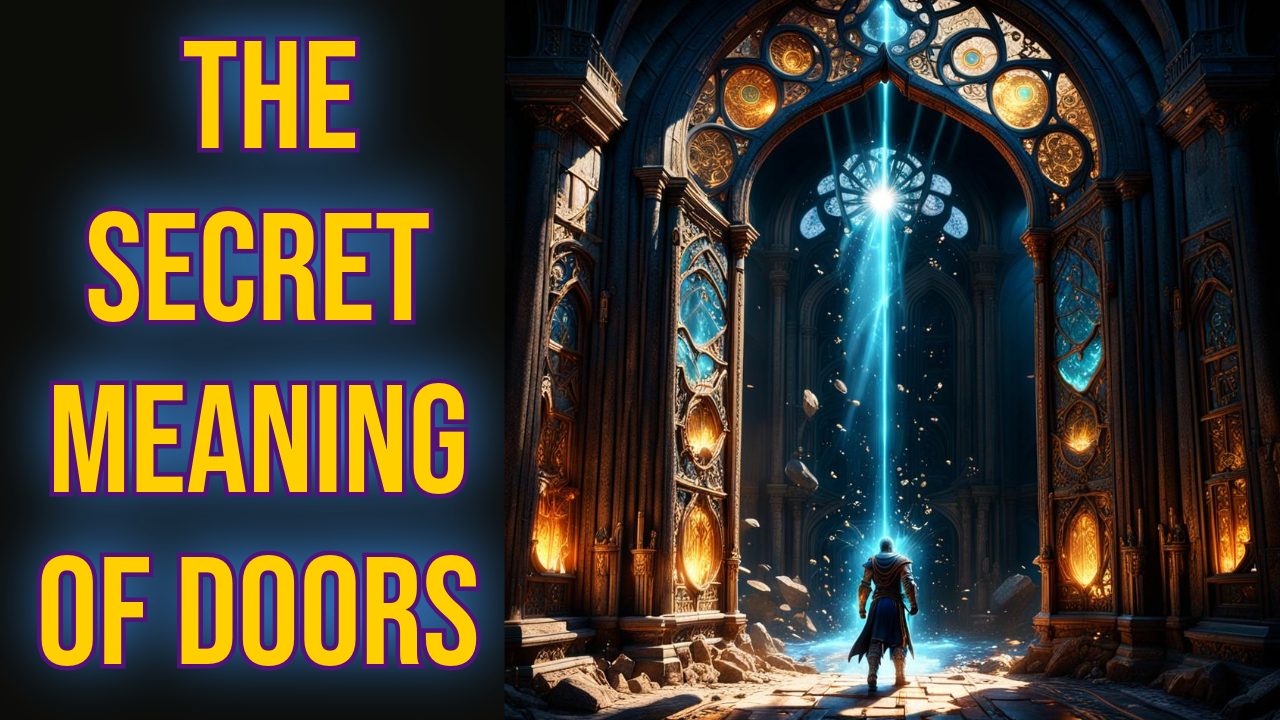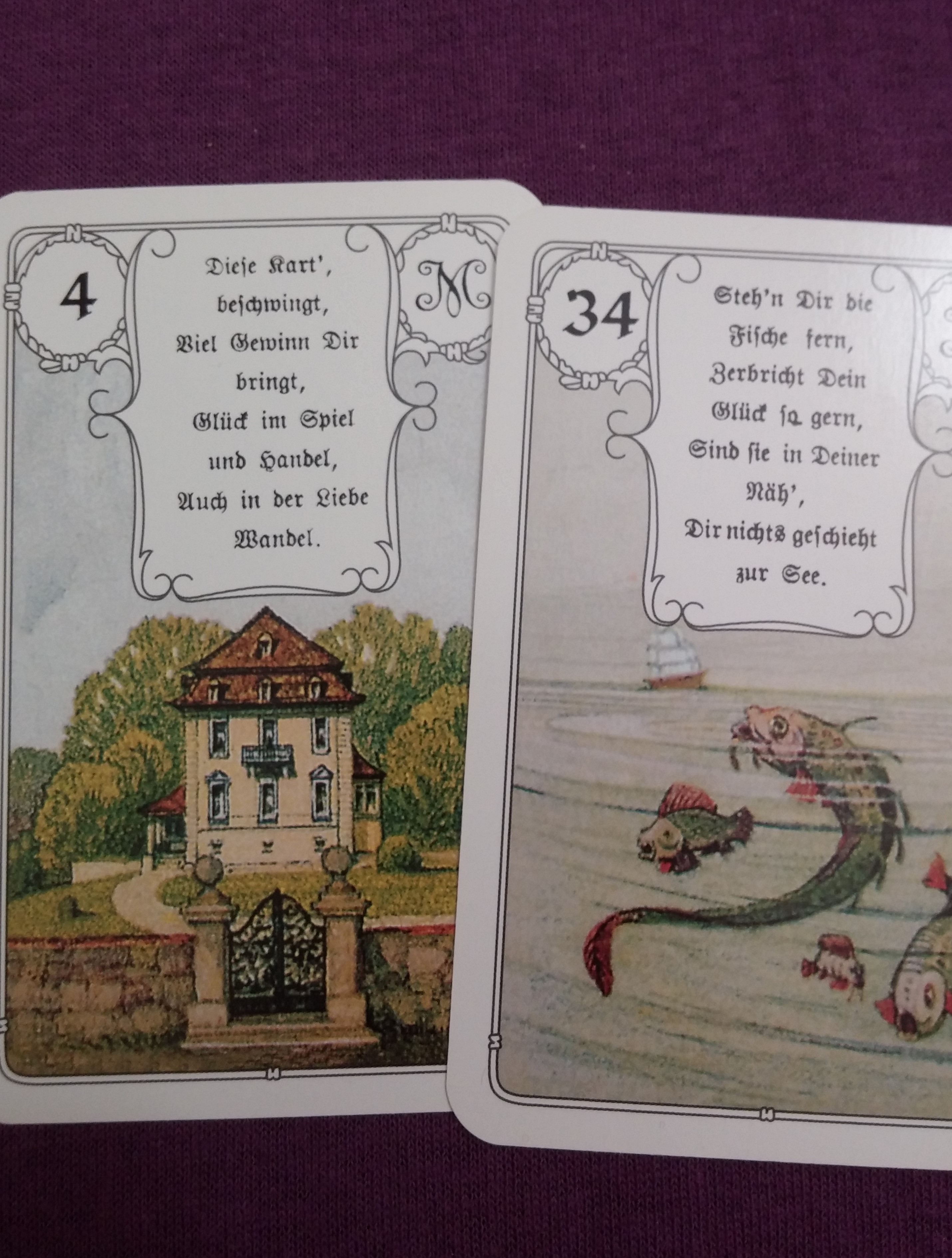
Exploring the symbolic and occult meanings of horns involves delving into various cultural, historical, and mythological contexts where they have played significant roles. This essay will examine how horns have been perceived across different civilizations, their symbolic representations, and their deeper, occult meanings in various belief systems and mythologies.
Beyond their biological function, horns have been imbued with symbolic meanings that transcend the natural world. Across cultures, horns have been associated with power, fertility, divinity, and protection. In occult traditions, they hold esoteric significance, often linking the earthly with the unearthly realms.
Horns are an animal’s weapon, so it follows that as a symbol they function as representing this aspect. They are also the power and dignity of the divinity, and horned gods usually represent warriors and lords of animals.
Horns can have both positive and negative symbolic meanings. They can represent:
- Strength and aggressiveness, as an animal’s weapon.
- Divinity: In many cultures, powerful deities or divine beings are depicted with horns to emphasize their authority over earthly matters and spiritual realms. The size and shape of horns can imply the magnitude of their power.
- Salvation and immortality: Horns are durable, so they can represent redemption and eternal life.
- Protection and asylum: Deities or beings depicted with horns may symbolize guardianship and protection. They are seen as defenders who offer sanctuary and safeguard individuals or communities from harm.
- Madness and rage: Horns are often associated with violence, especially from a charging animal.
- Masculine representation: Horns can be a phallic symbol.
- Beauty, strength, and wisdom: Horns can be considered beautiful due to their graceful curves and intricate shapes. They are often associated with animals renowned for their physical strength and endurance. They may also represent an elevated consciousness or a connection to higher realms of understanding, emphasizing wisdom gained through introspection and divine revelation.
- Death and unordered passions: Horned beings may be guardians or guides of the underworld, where they oversee the transition of souls or judge the deceased. Horns are often linked to animals known for their wild and untamed nature, such as bulls or rams.
- Victory: The raised horn is a common biblical symbol, especially of being rescued from oppression.
- In ancient Mesopotamia, Egypt, and Greece, horns were symbols of gods and goddesses. The Mesopotamian bull-man Enkidu. The Egyptian goddess Hathor, who was depicted with horns, symbolizing her nurturing and protective aspects.
In Judeo-Christian traditions, horns take on many meanings.
Keren is a Hebrew word whose primary meaning is horn. It’s sometimes used to refer to the shofar, an instrument made from a ram’s horn used ceremonially in Jewish rituals, symbolizing mystical awakening and repentance. It also refers to the legal category of damage inflicted by an animal’s horn.
- Keren also means “ray, or something projected from a point.”
- An additional meaning of Keren is “fund or capital.”
- For the meaning “fund”, some scholars provide this etymology to be borrowed from Akkadian qerenu (heap, stack or threshing floor.)
Keren as horn derives from the Hebrew haruv. The Greeks had a word for carob – keration, literally meaning “little horn”, from keras, horn. This eventually led to the English word carat and modern Italian corna.
In Italy, when confronted with unfortunate events, or simply when these events are mentioned, the sign of the horns may be given to ward off further bad luck. It is also used traditionally to ward off the “evil eye” (malocchio).
Horns are also associated with the devil in Christian iconography, portraying evil and temptation.
When the Israelites started worshipping idols in the shape of bulls, their religious authority condemned these acts as they believed that there was only one true god. Hence horns started to represent something shunned upon or evil.
In Islam, Dhu al-Qarnayn, “The Two-Horned One”, appears in the Qur’an as one who travels to the east and west and sets up a barrier between a certain people and Gog and Magog.
The Arabian word qarn means both “horn” and “period” or “century”.
Dhu al-Qarnayn has mostly been identified by Western and traditional Muslim scholars as Alexander the Great, others have argued in favour of him being actually Cyrus the Great, the founder of the Achaemenid Empire and conqueror of Persia and Babylon.
In Hinduism, the horned god Shiva is both a destroyer and a creator, embodying cosmic balance.
In Hatha Yoga, a hand gesture similar to horns is known as Apana Mudra, and it’s believed to rejuvenate the body. In Indian classical dance forms, it symbolizes the lion. In Ayurveda they use deer horns as medicine.
In Buddhism, the Karana Mudrā is seen as a gesture to expel demons, remove negative energy, and ward off evil. It is commonly found on depictions of Gautama Buddha. Tibetan Buddhism features wrathful deities adorned with skulls and horns, signifying their fierce protective powers.
Horns are also found on the Song dynasty statue of Laozi, the founder of Taoism in China. In Chinese culture, ox horns symbolize strength and resilience.
It’s interesting to note the similar etymology and sound of horn, keren, qerenu, keras, corna, qarn, karana…it’s a piece of the puzzle to support the theory of an ancient worldwide body of knowledge and connection.
Symbolic Meanings of Horns
Power and Authority
Horns often symbolize power and authority. In ancient times, rulers wore horned crowns or helmets to signify their leadership and divine right to rule. This symbolism persists in modern contexts, where horns denote strength and dominance.
Fertility and Vitality
Throughout history, horns have been linked to fertility and vitality due to their association with animals like bulls and goats. In agricultural societies, horned gods and goddesses were revered for their ability to ensure abundant harvests and animal fertility.
Protection and Defense
Horns are also symbols of protection and defense. In many cultures, amulets and talismans featuring horn motifs were believed to ward off evil spirits and provide protection. Horned animals like the bull were seen as guardians of their herds.
Transformation and Spirituality
In occult traditions, horns represent transformation and awakening. The Horned God archetype, found in various pagan traditions, symbolizes the cycles of life, death, and rebirth. Horned deities are often associated with the wilderness and the untamed aspects of nature.
Occult Meanings of Horns
Esoteric Symbolism
In occultism, horns have esoteric meanings related to enlightenment and occult knowledge. They symbolize the ability to transcend earthly limitations and connect with higher realms of consciousness.
Ritualistic Uses
Horns are used in occult practices to invoke unearthly forces and entities. Horned masks and headdresses are worn in ceremonial rituals to channel specific energies or deities and embrace the darker aspects of human nature to undergo a metamorphosis through rituals.
Alchemical Symbolism
In alchemy, horns symbolize the process of transformation and purification. The horned symbol represents the union of opposites and the synthesis of mystical and material elements. Alchemists sought to achieve enlightenment and immortality also through the symbolic transformation represented by horns.
Mythological meaning of Horns
The unicorn is a legendary creature that has been described since antiquity as a beast with a single large, pointed, spiraling horn projecting from its forehead.
The horn itself and the substance it was made of was called alicorn, and it was believed that the horn held magical and medicinal properties.
Dark meanings of Horns
The symbolism of horns also encompasses darker and more obscure meanings, often delving into themes of rebellion, forbidden knowledge, and the primal instincts of humanity. These interpretations are found in various occult traditions and mythologies where horns are associated with entities and deities considered malevolent or adversary.
Rebellion and Non-Conformity
In occult and esoteric contexts, horns can symbolize rebellion against established norms and authority. Entities or beings depicted with horns, such as demons or rebellious gods, embody a defiance of conventional rules and structures. They represent a primal, untamed aspect of human nature that seeks to challenge and transcend limitations.
The horned god archetype, such as Pan or Cernunnos in pagan traditions, is often depicted as a mediator between the human and supernatural worlds, offering knowledge that challenges conventional understanding.
Malevolence and Darkness
Horned creatures like the Krampus in Alpine folklore or various demonic beings in mythologies are feared symbols of darkness and chaos.
Primal Instincts and Wild Nature
Animals with horns are often associated with raw power, aggression, and sexual potency. In occultism, this primal energy can be harnessed for both creative and destructive purposes, reflecting the dualistic nature of horns as symbols of both life-giving fertility and dangerous aggression.
Radiant meanings of Horns
While horns can indeed carry darker and more ambiguous meanings in certain contexts, they also hold positive and benevolent symbolism across various cultures. These interpretations often highlight qualities such as strength, protection, fertility, and mystical connection.
Strength and Power
Some of the most prominent positive symbolic meanings of horns are strength and power. In many cultures, horns symbolize the strength to overcome challenges and obstacles.
Protection and Defense
In ancient times, horns adorned helmets and shields, symbolizing the defensive capabilities of warriors. Amulets and talismans featuring horn motifs were believed to ward off evil entities and provide protection to the wearer.
Fertility and Abundance
In agricultural societies, horns are symbols of fertility and abundance. Horned gods and goddesses were invoked to bless fields and ensure prosperity in fertility rituals and ceremonies.
Connection to Nature and the Divine
Horns are often seen as symbols of a connection to nature and the divine. Animals with horns are viewed as intermediaries between the earthly and unearthly realms, embodying the raw forces of nature and the wisdom of the natural world.
Positive Masculine Energy
The strength, protection, and vitality associated with horned animals and deities are often seen as embodiments of positive masculine attributes such as courage, resilience, and leadership.
Are there any hidden meanings in the symbolism of horns?
The symbolism of horns often carries hidden or deeper meanings that go beyond their more obvious interpretations.
Dualistic Nature
One hidden meaning of horn symbolism is its dualistic nature. Horns can simultaneously represent both positive and negative qualities, such as strength and aggression, protection and danger, fertility and untamed instincts. This duality reflects the complex and contradictory aspects of human nature and the universe itself, emphasizing the interconnectedness of opposites.
Gateway to Other Realms
In occult and mystical traditions, horns are sometimes seen as symbolic gateways or portals to other realms of existence. Horned deities and higher beings are believed to possess the ability to traverse between the physical world and other dimensions, acting as intermediaries or guides for those seeking deeper mystical knowledge and experiences.
Integration of Mystical and Physical Energies
In esoteric practices, horns represent the union of divine and earthly forces, embodying the harmonious balance between enlightenment and material existence.
Transformation and Evolution
Horns symbolize transformation and evolution, both on a personal and cosmic level. They represent the cyclical nature of life, death, and rebirth, as well as the continuous process of enlightenment. Horned deities and mythological figures often undergo symbolic transformations, symbolizing the evolution of consciousness and the pursuit of higher wisdom.
Hidden Knowledge and Mysteries
Horns can be symbols of hidden knowledge and mysteries that lie beyond ordinary perception. In occult traditions, horned symbols are associated with esoteric teachings, arcane wisdom, and secret societies that seek to uncover deeper truths about existence and the universe.
The symbolic and occult meanings of horns underscore their enduring significance in human culture, reflecting universal themes of power, fertility, protection, and transcendence. As humanity continues to evolve, so too will the interpretations and applications of horn symbolism, resonating across time and cultures as a testament to our collective quest for meaning and connection to the divine.
What do you think about the Symbolism and Meanings of Horns? Let us know in the comment section and share the post!!!
Video version here:
Symbolic and Occult meanings of Horns
Interesting sources, additional info, images, credits, attributions and other points of views here:
https://www.thejc.com/judaism/jewish-words/keren-drv9jg6v
https://www.balashon.com/2016/09/keren.html
https://en.wikipedia.org/wiki/Sign_of_the_horns
https://en.wikipedia.org/wiki/Cornucopia
https://en.wikipedia.org/wiki/Horned_deity
https://en.wikipedia.org/wiki/Horned_Serpent
https://en.wikipedia.org/wiki/Unicorn
https://en.wikipedia.org/wiki/Dhu_al-Qarnayn
https://commons.wikimedia.org/wiki/File:Index_and_little_fingers_open.JPG
https://commons.wikimedia.org/wiki/File:Fortuna_Statue.jpg
https://commons.wikimedia.org/wiki/File:MekauraHeldByGoddessHathor_MuseumOfFineArtsBoston.png
https://commons.wikimedia.org/wiki/File:Isis_Enthroned-Egyptian-650-BCE.jpg
https://en.wikipedia.org/wiki/File:Museo_Barracco_-_Giove_Ammone_1010637.JPG
https://commons.wikimedia.org/wiki/File:SFEC_EGYPT_KARNAK_2006-001.JPG
https://commons.wikimedia.org/wiki/File:Alexander-Coin.jpg
https://commons.wikimedia.org/wiki/File:Cernunnos.jpg
https://commons.wikimedia.org/wiki/File:Gundestrupkedlen-_00054_(cropped).jpg
https://commons.wikimedia.org/wiki/File:Backer_Judgment_(detail).JPG
https://commons.wikimedia.org/wiki/File:RWS_Tarot_15_Devil.jpg
https://commons.wikimedia.org/wiki/File:Baphomet_by_%C3%89liphas_L%C3%A9vi.jpg
https://commons.wikimedia.org/wiki/File:Indus_pottery_figure_of_horned_deity.jpg
https://commons.wikimedia.org/wiki/File:Shiva_Pashupati.jpg
https://commons.wikimedia.org/wiki/File:Indus_bull-man_fighting_beast.jpg
https://commons.wikimedia.org/wiki/File:Horned_deities_on_an_Indus_Valley_seal_with_detail.jpg
https://commons.wikimedia.org/wiki/File:Ajrud.jpg
https://commons.wikimedia.org/wiki/File:Geh%C3%B6rnter_Gott,_Enkomi.jpg
https://commons.wikimedia.org/wiki/File:Horned-Serpent-SanRafaelSwell-Utah-100_1933.jpg
https://commons.wikimedia.org/wiki/File:Snakerock.jpg
https://en.wikipedia.org/wiki/File:DomenichinounicornPalFarnese.jpg
https://commons.wikimedia.org/wiki/File:Oftheunicorn.jpg
https://commons.wikimedia.org/wiki/File:Unicorn_in_Apadana,_Shush,_Iran–2017-10.jpg
https://commons.wikimedia.org/wiki/File:Unicorn_annunciation.jpg
https://commons.wikimedia.org/wiki/File:Annunciation_with_the_Unicorn_and_Adoration_of_the_Magi.jpg
https://commons.wikimedia.org/wiki/File:The_Unicorn_in_Captivity_-_Google_Art_Project.jpg
https://commons.wikimedia.org/wiki/File:Licorne_Edimbourg_Scotland.JPG
https://commons.wikimedia.org/wiki/File:AlphonseL%C3%A9vy_Shofar.jpg
https://commons.wikimedia.org/wiki/File:2005_04_27_1582_Dall_Sheep.jpg
https://commons.wikimedia.org/wiki/File:Greater_Kudu,_Etosha_National_Park,_Namibia_2.jpg
https://commons.wikimedia.org/wiki/File:Pan87.3.jpg
https://commons.wikimedia.org/wiki/File:Pan_compilation.jpg
https://commons.wikimedia.org/wiki/File:Vrubel_pan.jpg
https://commons.wikimedia.org/wiki/File:Laozi_002.jpg
https://commons.wikimedia.org/wiki/File:Lascaux-IV_01.jpg
https://commons.wikimedia.org/wiki/File:Lascaux_II.jpg
https://commons.wikimedia.org/wiki/File:Hieronymus_Bosch_020.jpg
https://commons.wikimedia.org/wiki/File:Weltliche_Schatzkammer_Wienb.jpg
https://en.wikipedia.org/wiki/Baphomet
https://commons.wikimedia.org/wiki/File:Abraxas_Artistic_representationi.jpg
https://commons.wikimedia.org/wiki/File:Jean_Dodal_Tarot_trump_15.jpg
https://commons.wikimedia.org/wiki/File:Mikul%C3%A1%C5%A1_a_Krampus_1900s.jpg
https://commons.wikimedia.org/wiki/File:Gruss_vom_Krampus.jpg
https://commons.wikimedia.org/wiki/File:Nikolaus_und_Krampus.jpg
https://commons.wikimedia.org/wiki/File:Britishmuseumwaterloohelmet.jpg
https://commons.wikimedia.org/wiki/File:Gundestrup_C.jpg
https://commons.wikimedia.org/wiki/File:Angelo_monticelli_shield-of-achilles.jpg
https://commons.wikimedia.org/wiki/File:Illustrerad_Verldshistoria_band_I_Ill_058.jpg
https://commons.wikimedia.org/wiki/File:Cyrus_Great.jpg
https://commons.wikimedia.org/wiki/File:Iranischer_Meister_001.jpg
https://pixabay.com/photos/drinking-horn-middle-ages-market-436361
https://pixabay.com/photos/goat-black-horn-farm-3687106
https://pixabay.com/photos/lotus-corniculatus-horn-clover-3468864
https://pixabay.com/photos/coat-of-arms-emblem-horn-sign-3283
https://pixabay.com/photos/nasal-shield-horn-post-horn-116803
https://pixabay.com/photos/god-shiva-statue-yellow-god-702446
https://pixabay.com/photos/statue-religion-sculpture-angel-6533672
https://pixabay.com/photos/buddhist-deity-tibet-317171
https://pixabay.com/videos/halloween-demon-devil-horror-scary-136221
https://pixabay.com/illustrations/creatura-alieno-mostro-paura-8605394
https://pixabay.com/illustrations/fantasy-woman-queen-jewels-8621371
https://pixabay.com/illustrations/ai-generated-woman-witch-creature-8631545
https://pixabay.com/illustrations/unicorn-horse-fantasy-magic-animal-8726586
https://pixabay.com/illustrations/ai-generated-mask-dragon-exotic-8717847
https://pixabay.com/illustrations/ai-generated-monster-halloween-mask-8309239
https://pixabay.com/photos/skull-bone-skeleton-cow-pasture-7139441
https://pixabay.com/illustrations/ai-generated-aries-symbol-astrology-8817380
https://pixabay.com/photos/skull-beef-painted-horn-bone-2270734
https://pixabay.com/photos/snail-horns-animal-antenna-cute-4365564

